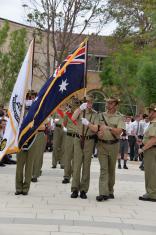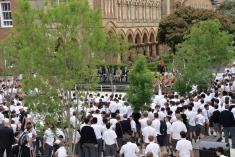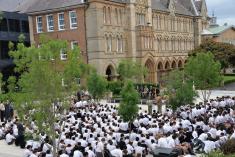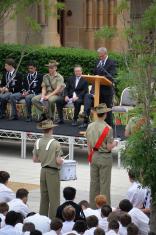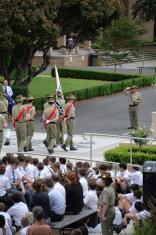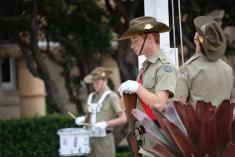Origins of Remembrance Day
This speech was presented by Head of History, Mr Peter Reid at the Sesquicentenary Courtyard for Remembrance Day 2014.
At the eleventh hour of the eleventh day of the eleventh month 1918 the guns on the Western Front fell silent – an Armistice or ceasefire had been agreed to and a war that saw some 10 million dead and millions more wounded and maimed had ended.
The first Armistice or Remembrance Day was held in November 1919 to commemorate the fallen of the Great War, or, as idealists hoped, the ‘War to end all Wars’. Monuments of marble sprang up in cities and country towns across the world and red ‘Flanders’ poppies became a symbol of remembrance.
It was not to be, however – a flawed peace process and the rise of militarist dictatorships saw a second even more terrible war break out 20 years later.
Historians now refer to these conflicts as the First and Second World Wars and they have been followed by other conflicts to the present day.
Remembrance Day is where we remember those who have died or suffered in all wars so that their names, as Kipling wrote, ‘Liveth For Evermore’.
Mr Peter Reid
Head of History




